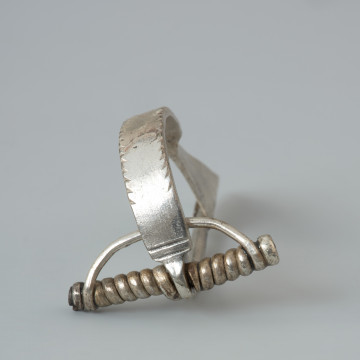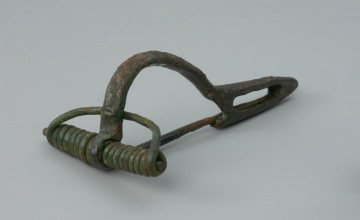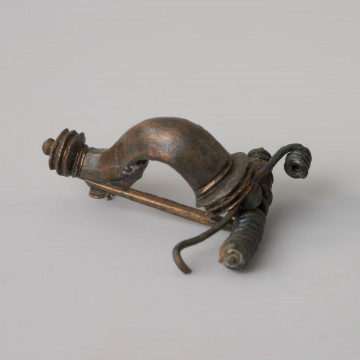
Tortoiseshell buckle
201 — 299
National Museum in Szczecin
Part of the collection: Antiquity
Fibulae, serving as a decorative and practical element of an outfit, are divided into many variants depending on their design. The differences concern the construction elements of the brooch - the bow, the spring or the catch-plates. In the case of the presented fibula, the bow is connected directly to the foot - the end of the fibula, which is the catch for the pin. This design feature allows dating the fibula to the 3rd century. It was found together with another, almost identical silver fibula and other ornaments in the furnishings of a partially destroyed inhumation grave discovered and excavated in 1992. The decoration of the metal objects corresponds with the style of the Wielbark culture which occupied most of Pomerania at that time. Its distinguishing feature is the lack of iron objects and weapons in the graves. However, the area around Pyrzyce was inhabited at that time by smaller communities forming the so-called Pyrzyce cluster, distinguished by different rituals and their prevalent preference for the forms of ornamentation typical for the Elbe region. The grave from Przelewice was discovered in a built-up area. It is impossible to determine whether it was part of a destroyed cemetery and with which group it should be connected.
Bartłomiej Rogalski
Author / creator
Dimensions
cały obiekt: height: 2.7 cm, width: 5.1 cm
Object type
pin (fastener)
Technique
casting
Material
silver
Creation / finding place
Owner
Muzeum Narodowe w Szczecinie
Identification number
Location / status

201 — 299
National Museum in Szczecin

National Museum in Szczecin

National Museum in Szczecin
DISCOVER this TOPIC
Castle Museum in Łańcut
DISCOVER this PATH
Educational path